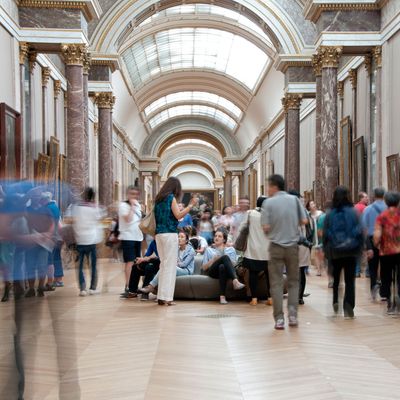
Wander into any art museum, and you’ll see two types of people. There are the ones who actually want to be there for the art, and then the ones who are there out of guilt or peer pressure or just to use the bathroom — the ones who understand that, sure, some people are moved or fascinated by art, but feel like they’re missing the chip that allows them to see anything beyond a bunch of splotches on a canvas. (As someone who falls into this category, I take a small amount of comfort in the fact that even art experts can get confused; as Science of Us has previously reported, art experts can fall for fakes.)
But as Jess Bidgood recently wrote in the New York Times, museums are now making a concerted effort to crack that second group — by tapping into the way their brains work. Some are even hiring neuroscientists to help them bridge the gap between what visitors see and what’s going on inside their heads. A few examples: The Peabody Essex Museum in Salem, Massachusetts, supplemented a display of horror-movie posters with a scientific explanation about what fear does to the brain, while the London National Gallery teamed up with vision researchers to host an interactive experiment about how we perceive color.
In some cases, incorporating neuroscience can also mean changing the way existing works are displayed. “We create large galleries with large numbers of works of art,” Peabody museum director Dan Monroe explained to the Times, but “our brains are designed to respond to change, diversity and motion.” To prevent people from getting bored and rushing through their visit, he said, the museum is now focusing on developing smaller exhibitions that contain fewer works in each room: It “creates an enhanced sense of exploration and discovery, which is really important.”
“It seems pretty clear to us that most people experience art on the basis of unconscious filters, operators, values, past experiences and knowledge,” Monroe told the paper. “Most people do not actually stop and look carefully and consciously think about what they’re seeing.” You can be an art person or not, in other words, but neuroscience is the great equalizer of art museums: With the right cues, you can apply what you know and what you feel to whatever it is you’re looking at, creating meaning where you didn’t see any before.




